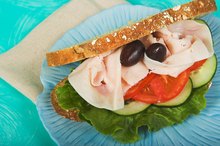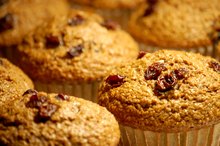What does fact checked mean?
At Healthfully, we strive to deliver objective content that is accurate and up-to-date. Our team periodically reviews articles in order to ensure content quality. The sources cited below consist of evidence from peer-reviewed journals, prominent medical organizations, academic associations, and government data.
The information contained on this site is for informational purposes only, and should not be used as a substitute for the advice of a professional health care provider. Please check with the appropriate physician regarding health questions and concerns. Although we strive to deliver accurate and up-to-date information, no guarantee to that effect is made.
2,000 Calorie per Day Diet Plan
Whether a 2,000-calorie diet causes you to maintain, gain or lose weight depends on your age, gender, current calorie intake, activity level and weight-management goals. If a 2,000-calorie diet is appropriate for you, using a 2,000-calorie meal plan -- and keeping a food diary – can help you stick to your daily calorie allotment.
Calorie Requirements
"Moderately active" means exercising the equivalent to walking 1.5 to 3 miles daily at a pace of 3 to 4 miles per hour, and active is defined as exercising the equivalent of walking more than 3 miles daily at the same pace. But moderately active and very active men of all ages may lose weight eating just 2,000 calories per day. Harvard Medical School reports that your individualized calorie needs for weight maintenance are 13 to 18 calories per pound of your body weight daily – depending on your activity level.
Protein Targets
Recommended Daily Allowance for Calories
Learn More
When eating 2,000 calories per day, "Dietary Guidelines for Americans, 2010" suggests eating 5.5 ounces from the protein foods group. Items in this group include:
- meat
- seafood
- poultry
- eggs
- soy products
- legumes
- seeds
- nuts
ChooseMyPlate.gov reports that a 1-ounce portion from the protein foods group equals one egg, 1 ounce of meat, poultry or seafood, 1/2 ounce of seeds or nuts, 1 tablespoon of nut butter, 2 ounces of tofu or 1/4 cup of legumes.
Healthy Fats
Healthy, unsaturated fats are an essential part of any 2,000-calorie meal plan. "Dietary Guidelines for Americans, 2010" suggests you consume 27 grams, or about 6 teaspoons, of oils daily when eating 2,000 calories a day. ChooseMyPlate.gov notes that a 1-teaspoon portion from the oils food group equals 1 teaspoon of plant-based oils, 1 tablespoon of Italian salad dressing, one-eighth of an avocado, 1/3 ounce of nuts or seeds, eight large olives or 1.5 teaspoons of nut butter.
Grain Portions
How to Lose 90 Pounds Quickly
Learn More
Grains, especially whole grains, generally make up a large portion of healthy 2,000-calorie diets. A 1-ounce portion from the grains group equals 1/2 cup of rice, pasta or cooked cereal; 1 cup of ready-to-eat cereal; or one slice of bread, notes ChooseMyPlate.gov. Choose whole grains -- when possible – such as quinoa, bulgur, brown rice, whole-grain breads, whole-grain cereals or oatmeal.
Fruits and Veggies
Because fruits and veggies are generally low in calories but rich in fiber, vitamins and minerals, they make a healthy addition to a nutritious 2,000-calorie meal plan. ChooseMyPlate.gov notes that 1/2 cup of dried fruit, 1 cup of fresh fruits or veggies, 1 cup of fruit or vegetable juice or 2 cups of leafy greens are all classified as 1-cup equivalents.
Dairy Guidelines
A 1-cup portion from the dairy group equals 2 cups of cottage cheese, 1.5 ounces of hard cheese -- such as cheddar, Swiss or mozzarella – or 1 cup of milk, yogurt or calcium-fortified soy milk, notes ChooseMyPlate.gov.
Related Articles
References
Writer Bio
Erin Coleman is a registered and licensed dietitian. She also holds a Bachelor of Science in dietetics and has extensive experience working as a health writer and health educator. Her articles are published on various health, nutrition and fitness websites.









